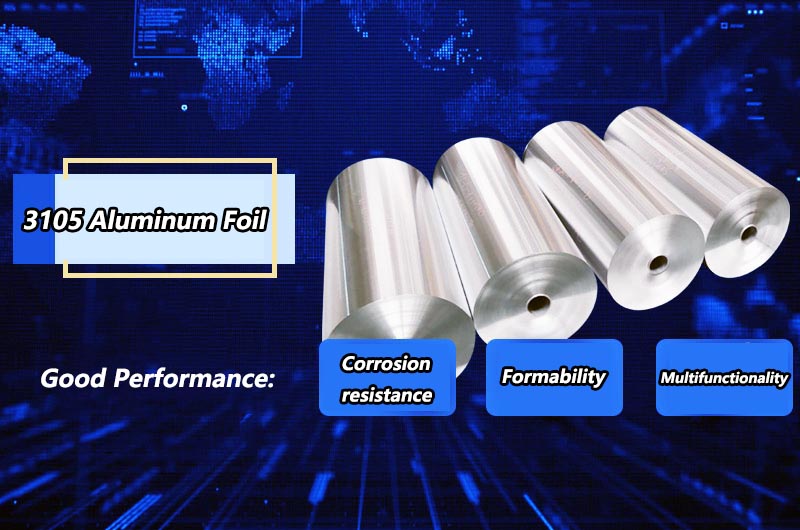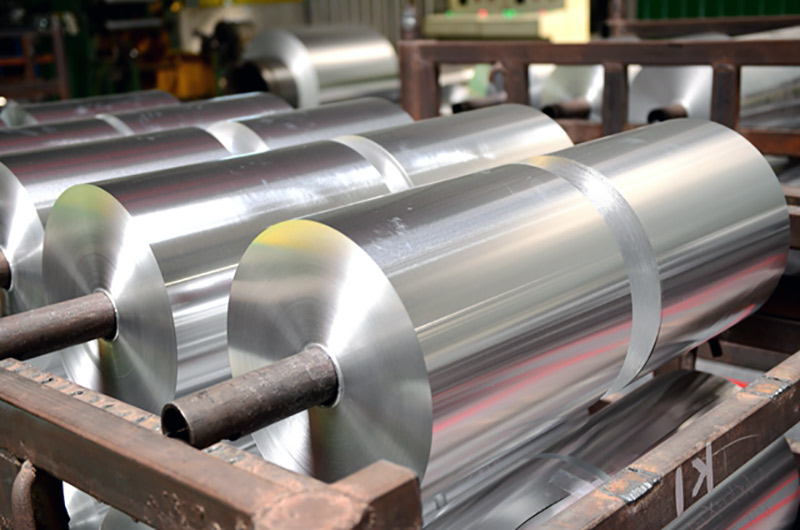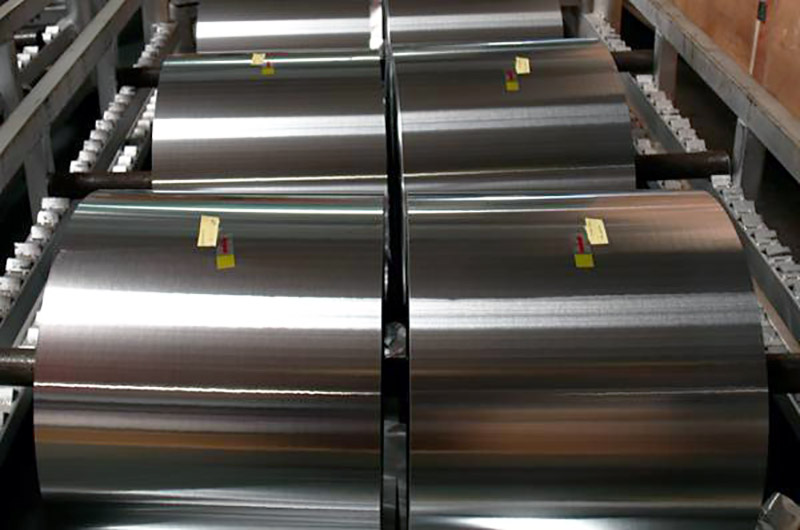- 3105 Aluminum Foil Composition and Alloying Elements
- 3105 Aluminum Foil Corrosion Resistance
- 3105 Aluminum Foil Formability and Workability
- Thicknesses and Specifications of 3105 Aluminum Foil
- Heat Exchangers and HVAC Applications
- 3105 Packaging Aluminum Foil
- Construction Applications
- 3105 Aluminum Foil for Automotive
- 3105 Decorative Aluminum Foil
- People also Search about 3105 Aluminum Foil
In the realm of metallurgy, where innovation meets precision, one particular alloy has been gaining attention for its versatile applications and remarkable properties – the 3105 aluminum alloy.
Among its various forms, 3105 Aluminum Foil stands out as a key player in industries ranging from packaging to construction. Let's delve into the intricacies of this aluminum foil, exploring its composition, characteristics, and the myriad ways it contributes to our daily lives.

3105 Aluminum Foil Composition and Alloying Elements
3105 aluminum alloy belongs to the 3000 series, known for its manganese content. The primary alloying elements in 3105 aluminum include manganese (around 0.3-0.8%), magnesium (0.20-0.8%), and trace amounts of other elements. The careful combination of these elements imparts specific qualities to the foil, making it an excellent material for various applications.
3105 Aluminum Foil Corrosion Resistance
One of the standout features of 3105 aluminum foil is its exceptional corrosion resistance. The alloy's resistance to corrosion, even in harsh environments, makes it a preferred choice for applications where exposure to moisture and other corrosive elements is a concern. This property extends the lifespan of products and ensures durability in challenging conditions.
3105 Aluminum Foil Formability and Workability
3105 Aluminum Foil is highly formable and malleable, making it an ideal material for intricate manufacturing processes. This formability, coupled with the alloy's ability to be easily worked and shaped, opens up a wide range of possibilities in industries such as packaging, where tailored designs and shapes are often required.
Thicknesses and Specifications of 3105 Aluminum Foil
Thickness Range
3105 Aluminum Foil is available in a range of thicknesses to suit various applications. Common thicknesses include:
- 0.005 inches (0.127 mm)
- 0.008 inches (0.2032 mm)
- 0.01 inches (0.254 mm)
- 0.012 inches (0.3048 mm)
- 0.016 inches (0.4064 mm)
- 0.02 inches (0.508 mm)

Width
The width of 3105 Aluminum Foil can vary based on the specific requirements of the application. Standard widths typically range from a few inches to several feet, depending on the intended use.
Alloy Temper
The temper designation for 3105 Aluminum Foil can vary, with commonly used tempers including:
- H14: Strain-hardened and partially annealed.
- H16: Strain-hardened.
- H18: Fully hardened.
Surface Finish
The foil may have different surface finishes based on the manufacturing process and application requirements. Common surface finishes include:
- Mill finish: The standard finish as it comes from the mill, with a natural, unpolished appearance.
- Bright finish: A smooth and shiny finish achieved through additional processing.
Tolerance and Coiling
Tolerances for thickness and width are typically specified based on industry standards and customer requirements. The foil may be supplied in coil form for ease of handling and processing.
International Standards
3105 Aluminum Foil complies with various international standards, including those set by organizations such as the Aluminum Association (AA) in the United States or the International Alloy Designations and Chemical Composition Limits for Wrought Aluminum and Wrought Aluminum Alloys (ISO 209).
Packaging
Foil rolls are often packaged in a manner that ensures protection during transportation and storage. Common packaging methods include the use of wooden pallets, moisture-resistant packaging, and appropriate labeling.
Heat Exchangers and HVAC Applications
The 3105 alloy's heat conductivity and formability make it a valuable material for heat exchangers and components in HVAC (Heating, Ventilation, and Air Conditioning) systems. Its resistance to corrosion is particularly advantageous in these applications, where exposure to varying temperatures and humidity levels is common.
3105 Packaging Aluminum Foil
3105 Aluminum Foil is extensively used in the packaging industry. Its light weight, corrosion resistance, and ability to block light and moisture make it an ideal choice for packaging materials, including foils for food packaging, pharmaceuticals, and other sensitive products. The foil's excellent barrier properties help preserve the freshness and quality of the contents.
3015 Packaging Aluminum Foil: Used in flexible packaging for items such as snacks, chocolates, and dairy products.
3105 Pharmaceutical Packaging Aluminum Foil: Utilized for blister packs and other forms of pharmaceutical packaging due to its barrier properties.

Construction Applications
In the construction sector, 3105 aluminum foil finds its place in various components, from roofing to cladding. Its corrosion resistance and formability make it suitable for exterior applications, where exposure to the elements is inevitable. The foil's lightweight nature also contributes to the overall efficiency of construction projects.
- Roofing material: 3105 aluminum foil is used in roofing applications due to its corrosion resistance and lightweight nature.
- Cladding: Applied as a protective layer in building exteriors to enhance durability.
3105 Aluminum Foil for Automotive
3105 Aluminum Foil for Radiator fins: Due to its thermal conductivity, 3105 foil is used in the production of radiator fins in automotive cooling systems.
3105 Aluminum Foil for Heat shields: Applied in the manufacturing of heat shields for various automotive components.
3105 Decorative Aluminum Foil
- Decorative foil: Used in the manufacturing of decorative items and packaging for consumer goods.
- Household items: Applications in the production of lightweight and corrosion-resistant household items.
The versatile nature of 3105 Aluminum Foil, coupled with its remarkable characteristics, makes it an indispensable material in a wide array of industries, contributing to the efficiency, durability, and quality of diverse products and applications.
People also Search about 3105 Aluminum Foil
- What is equivalent to 3105 aluminum?
- What is aluminum grade 3105?
- What is the difference between 3003 and 3105 aluminum?
- What is the difference between 5052 and 3105 aluminum?
In the world of aluminum alloys, the 3105 variant, particularly in its foil form, stands as a testament to the remarkable properties achievable through precise alloying. Its corrosion resistance, formability, and versatility make it an indispensable material in diverse industries, ranging from packaging to construction and beyond.
As technology continues to advance, the 3105 Aluminum Foil is likely to play an increasingly vital role in shaping the future of materials engineering and design.
